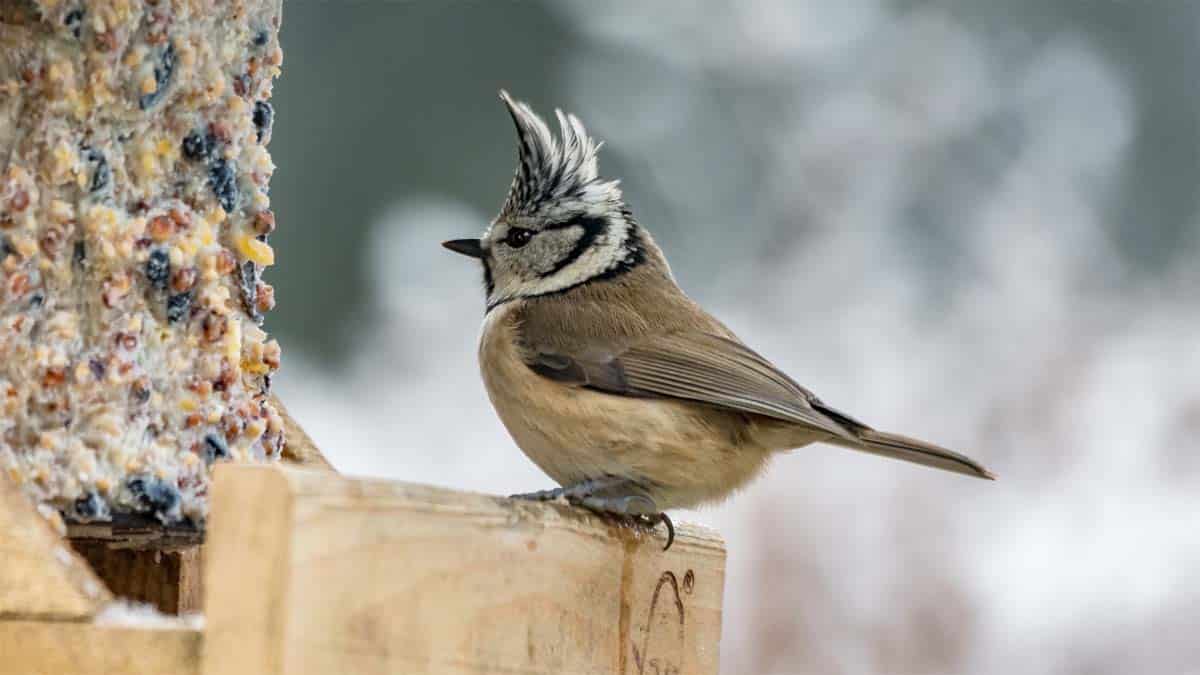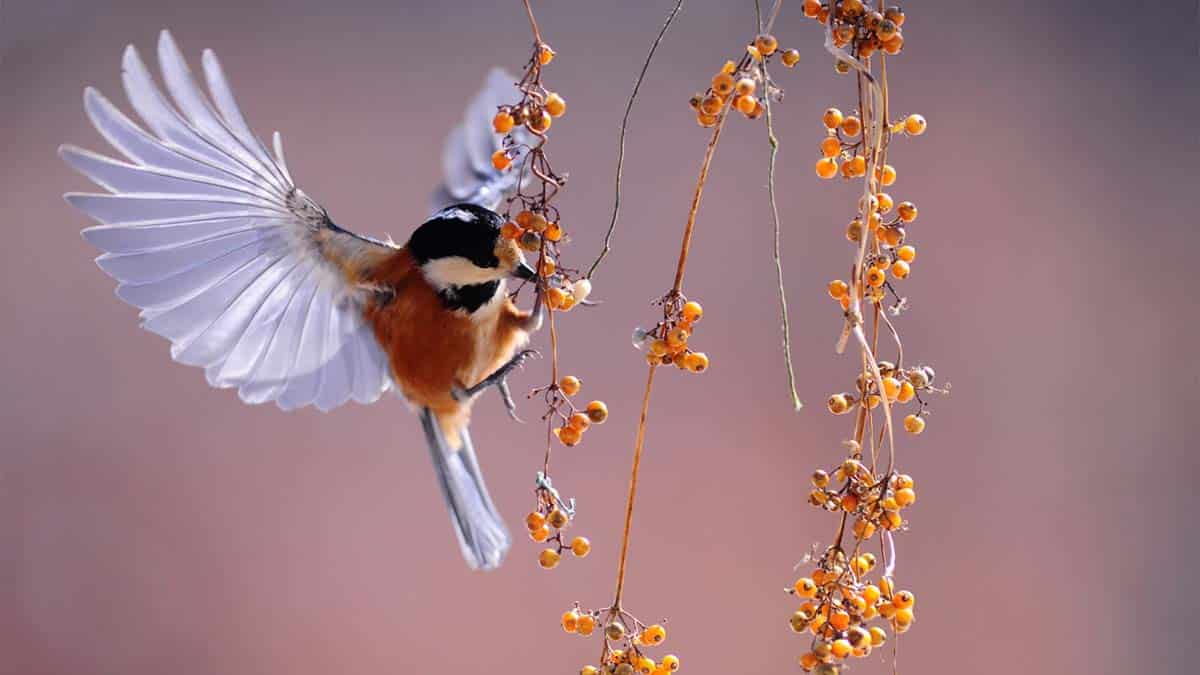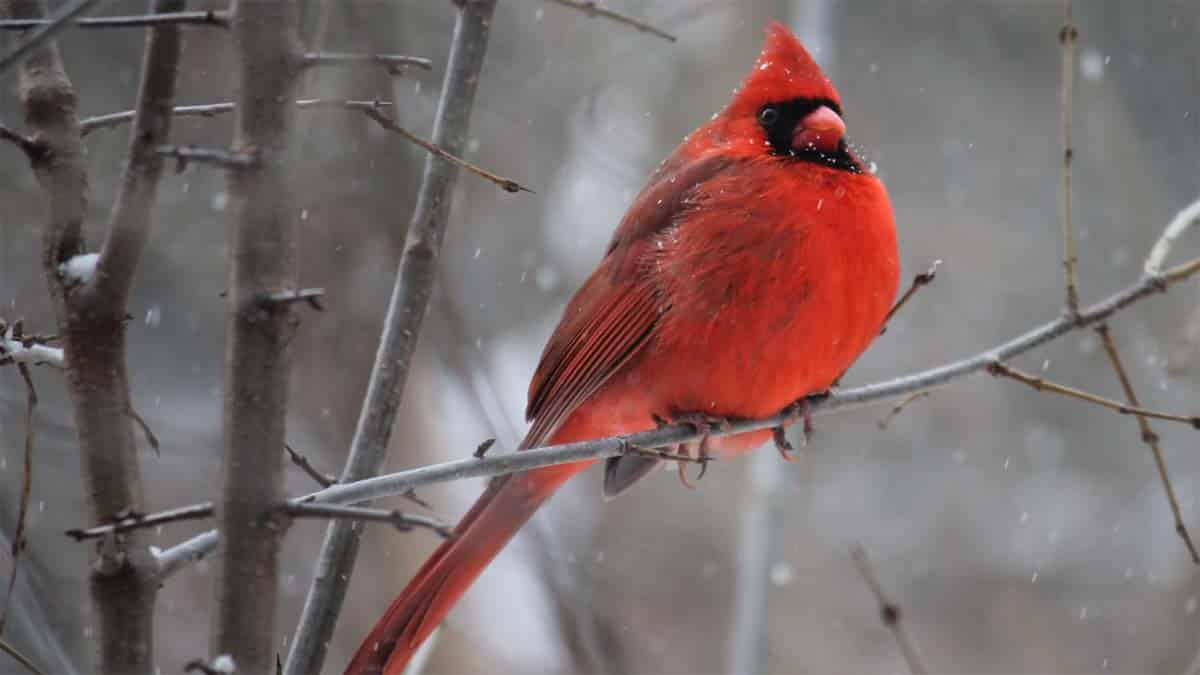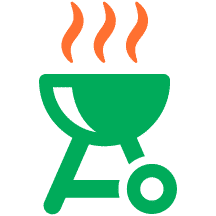Turn Your Backyard Into a Winter Oasis for Birds
There’s a reason February is National Bird Feeding Month across the country.
During harsh months when temperatures are extremely cold and food sources are covered in snow, feeding birds can increase their chances of survival. While Ohio native birds have adapted to seeking out a variety of food sources during winter, they benefit from supplemental feeders set up in your backyard. Here’s a list of our favorite bird supplies to support wildlife all winter!
Recommended Supplies for Winter Bird Feeding

Not all birds like to eat the same seed, that’s why Strader’s has a large assortment of bird seed for your backyard:
Mixed seed—Provides essential energy during winter and attracts a variety of wild birds.
Solitary seed – Looking to attract a particular species to your yard? Solitary seed varieties will attract the birds you want to your feeder.
Suet cakes – High-fat and high-protein blends that are perfect for supporting birds through harsh winter months.
Suet pellets – Like suet cakes, suet pellets are packed with high-energy nutrients. Suet pellets are more versatile for feeding a variety of birds.
Mealworms – A nutrient-rich treat that invites more insect-eating birds to your yard.
Just as birds have a preference when it comes to bird seed, they also have different preferences for bird feeders! Here are some of the different types of bird feeders you can find at your local Strader’s:
Platform feeders – Platform or tray feeders attract the largest variety of seed-eating winter birds to your yard. Because tray feeders have no protection from rain or snow, they have to be cleaned regularly to keep the bird seed free of mold and bacteria.
Hopper feeders – Hopper or house feeders are attractive to most feeder birds, and are large enough to store several days’ worth of seed. Hopper feeders should be checked regularly to make sure the bird seed is not wet. Wet bird seed is very dangerous for birds to eat because it fosters mold and bacteria growth.
Window feeders – With small plastic frames you can mount to your windows with suction cups, window feeders provide you with close-up views of birds, while preventing window collisions. Window feeders are extremely easy to fill and keep clean to protect the health of your winter birds.
Tube feeders – Hollow tube feeders keep seed fairly clean and dry, and come in different sizes to accommodate different bird seed sizes. Seeds that collect below the feeding ports can become a breeding ground for mold and bacteria, so it’s important to always empty out the old seed and clean the tube before adding new seed.
Suet feeders – Suet feeders are made of wire mesh or plastic-coated wire mesh, and come in different designs to accommodate suet cakes or suet pellets. As with other bird feeder styles, suet feeders must be kept clean to prevent mold or bacteria growth.
Mealworm feeders – Beloved by bug-eating birds, mealworm feeders are perfect for serving live or dried mealworms. It’s important to note that mealworms do not provide complete nutrition, so they should be used as supplemental treats only.
Celebrate National Bird Feeding Month with Strader’s
Ready to feed winter birds this February? Stop by any of our 6 locations across Columbus, Ohio, and talk to our friendly, knowledgeable staff. Or, if you’re shopping for the bird lover in your life, our online gift cards are the perfect way to surprise friends or family.
Plant a Berry Garden this Spring for Next Year’s Winter Birds

Transform your garden into a bird paradise–with berries! Stop by Strader’s this spring to shop for berry-producing plants that provide a natural source of essential nutrients to birds across Columbus. Here are some of our favorites that are perfect for planting in Ohio:
- Winterberry Holly
- Northern Bayberry
- Arrowwood Viburnum
- Inkberry Holly
- Honeysuckle
- Red or Black Chokeberry
- Snowberry
- Serviceberry
- Beautyberry
Top 10 Ohio Native Birds to Attract this Winter

Setting up food and water sources in your yard can help Ohio’s native birds thrive this February! With taste preferences as unique as their feathers, here’s what birds across central Ohio prefer to eat during the winter months:
Mourning Dove – Likes to eat sunflower seeds, mixed seed, and peanuts. Prefers hopper feeder or ground feeding.
Downy Woodpecker – Likes to eat sunflower seeds, peanuts, suet, and mealworms. Prefers a suet cage or hopper feeder.
Red-Bellied Woodpecker – Likes to eat suet. Prefers a suet cage.
Blue Jay – Likes to eat sunflower seeds, mixed seed, peanuts, mealworms, and suet. Not picky about feeder type.
Black-Capped Chickadee – Likes to eat sunflower seeds, peanuts, mealworms, and suet. Prefers hoppers and tube feeders.
Tufted Titmouse – Likes to eat sunflower seeds, suet, peanuts, and mealworms. Prefers tube feeder or hoppers.
White-Breasted Nuthatch – Likes to eat sunflower seeds, suet, peanuts, and mealworms. Prefers tube feeders, suet cages, or hoppers.
Northern Cardinal – Likes to eat sunflower seeds. Prefers a hopper feeder.
House Finch – Likes to eat sunflower seeds. Prefers tube or hopper feeders.
American Goldfinch – Likes to eat sunflower seeds. Prefers tube or hopper feeders.
Join the 25th Annual Great Backyard Bird Count February 18-21
Don’t miss the 25th Annual Great Backyard Bird Count this year! From Friday, February 18 to Monday, February 21, participants are asked to count birds for just 15 minutes per day, then report their sightings online. Each checklist submitted during the GBBC helps researchers at the National Audubon Society, Cornell Lab of Ornithology and Birds Canada learn more about birds and how to protect them.












